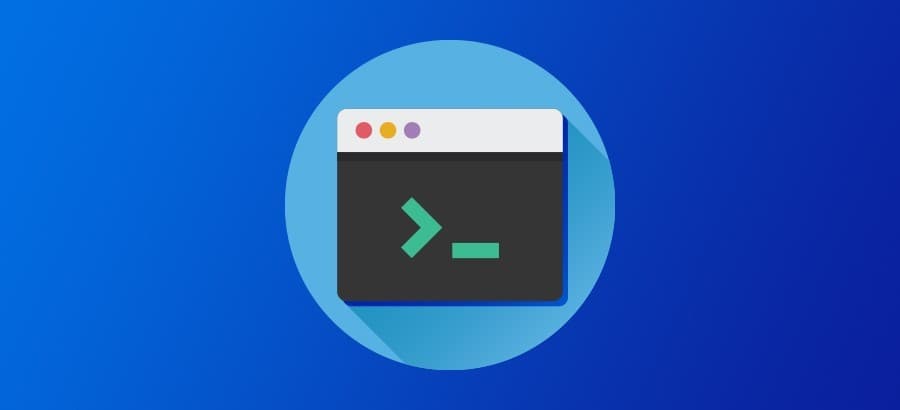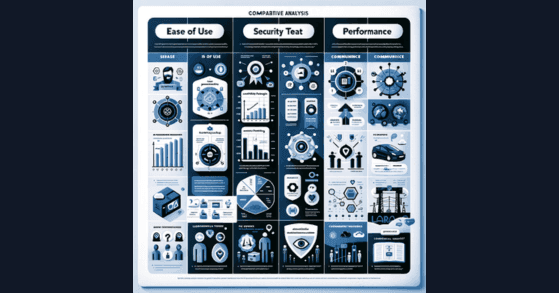Best Console & Terminal Applications for Windows: Secure, Fast & Feature-Rich Tools Compared
Explore top terminal emulators for Windows including SecureCRT, PuTTY, Terminus, and Windows Terminal. Compare features, security, and performance to find the ideal CLI tool for your workflow.

Console applications for Windows are programs that run in a text-based interface, commonly known as the command line or terminal. These applications do not have a graphical user interface (GUI) and are typically used for performing tasks that require direct interaction with the operating system or for automating repetitive tasks through scripts.
Key Features
Text-Based Interface: Console applications operate within a command prompt window, where users can input commands and receive text-based output.
Efficiency: They are often more efficient for certain tasks because they do not require the overhead of a GUI.
Automation: Console applications are ideal for scripting and automating tasks, making them popular among developers and system administrators.
Resource Management: They generally consume fewer system resources compared to GUI applications, which can be crucial for performance-critical applications.
Common Uses
System Administration: Tasks such as file management, system monitoring, and network configuration are frequently performed using console applications.
Development Tools: Many development tools, including compilers, debuggers, and version control systems, offer console-based interfaces.
Batch Processing: Console applications are well-suited for batch processing tasks, where a series of commands need to be executed in sequence without user intervention.
Examples
Command Prompt (cmd.exe): The default command-line interpreter for Windows, which allows users to execute a wide range of system commands.
PowerShell: A more advanced scripting language and command-line shell that provides powerful tools for system administration and automation.
Git: A version control system that can be operated entirely from the command line, allowing developers to manage their code repositories efficiently.
Conclusion
Console applications for Windows are a powerful tool for users who need to perform tasks quickly and efficiently without the need for a graphical interface. They play a crucial role in system administration, development, and automation, making them an essential part of the Windows operating system.
Importance of Secure and Efficient Terminal Emulators
Terminal emulators are crucial tools for interacting with a computer's operating system, especially for tasks that require command-line interfaces. These applications allow users to access the shell and execute commands, scripts, and programs directly. The importance of secure and efficient terminal emulators cannot be overstated, as they play a vital role in various aspects of computing.
Security: One of the primary concerns with terminal emulators is security. Since they provide direct access to the system's core functionalities, any vulnerabilities can be exploited by malicious users or software. Secure terminal emulators implement robust encryption protocols, such as SSH (Secure Shell), to protect data transmitted between the user and the remote system. They also support features like multi-factor authentication and session logging to enhance security further.
Efficiency: Efficient terminal emulators are designed to handle multiple tasks simultaneously without compromising performance. They offer features like tabbed interfaces, split screens, and customizable key bindings to streamline workflows. An efficient terminal emulator can significantly improve productivity by reducing the time required to switch between different tasks and commands.
Customization: Advanced terminal emulators provide extensive customization options, allowing users to tailor the interface and functionality to their specific needs. This includes changing color schemes, fonts, and window layouts, as well as creating custom scripts and macros to automate repetitive tasks. Customization enhances user experience and can lead to more efficient and enjoyable interactions with the system.
Compatibility: Terminal emulators must be compatible with various operating systems and remote servers. Cross-platform compatibility ensures that users can access and manage different systems from a single interface, regardless of the underlying operating system. This is particularly important for system administrators and developers who work in heterogeneous environments.
Integration: Modern terminal emulators often integrate with other tools and services, such as version control systems, text editors, and development environments. This integration allows for seamless transitions between different stages of the development and deployment process, making it easier to manage complex projects.
In conclusion, secure and efficient terminal emulators are indispensable for anyone who relies on command-line interfaces for their work. They provide the necessary tools to perform tasks quickly, securely, and efficiently, making them a critical component of modern computing environments.
Terminal Emulators: Popular Options
When discussing terminal emulators, it's essential to highlight some of the most popular and reliable options available today. These tools are invaluable for developers, system administrators, and anyone who relies on command-line interfaces for their daily tasks. Here, we provide a detailed overview of four widely-used terminal emulators: SecureCRT, PuTTY, Terminus, and Windows Terminal.
SecureCRT: SecureCRT is a commercial terminal emulator known for its robust security features and extensive customization options. It supports a wide range of protocols, including SSH, Telnet, and serial connections, making it a versatile choice for various network environments. SecureCRT also offers advanced session management, scripting capabilities, and a tabbed interface, which enhances productivity and ease of use.
PuTTY: PuTTY is a free and open-source terminal emulator that has been a staple in the community for years. It supports SSH, Telnet, and serial connections, and is known for its simplicity and reliability. PuTTY is lightweight and easy to install, making it an excellent choice for users who need a straightforward and efficient terminal emulator without the need for extensive features.
Terminus: Terminus is a modern, cross-platform terminal emulator that aims to provide a sleek and user-friendly experience. It supports multiple tabs and split panes, allowing users to manage multiple sessions simultaneously. Terminus also integrates with various plugins and themes, enabling users to customize their environment to suit their preferences. Its compatibility with Windows, macOS, and Linux makes it a versatile tool for developers working across different operating systems.
Windows Terminal: Windows Terminal is a new, open-source terminal application developed by Microsoft. It supports multiple tabs, a variety of shells (such as Command Prompt, PowerShell, and WSL), and extensive customization options. Windows Terminal is designed to be a powerful and flexible tool for developers and IT professionals, offering features like GPU-accelerated text rendering, Unicode support, and a rich set of configuration options.
In summary, SecureCRT, PuTTY, Terminus, and Windows Terminal each offer unique features and capabilities that cater to different user needs. Whether you require advanced security, simplicity, modern design, or extensive customization, these terminal emulators provide reliable solutions for managing command-line tasks efficiently.
SecureCRT
Overview and History
SecureCRT is a robust and feature-rich terminal emulator developed by VanDyke Software. It is designed to provide secure remote access, file transfer, and data tunneling for IT professionals and network administrators. SecureCRT supports a wide range of protocols, including SSH, Telnet, and serial, ensuring compatibility with various network devices and systems.
The history of SecureCRT dates back to the mid-1990s when it was first introduced as a simple terminal emulator for Windows. Over the years, it has evolved significantly, incorporating advanced security features such as strong encryption, public key authentication, and multi-factor authentication. These enhancements have made SecureCRT a trusted tool for organizations that prioritize security and reliability in their remote access solutions.
In addition to its security capabilities, SecureCRT offers a highly customizable user interface. Users can create and manage multiple sessions, organize them into tabbed groups, and configure session-specific settings. The software also supports scripting and automation through Python and other scripting languages, allowing users to streamline repetitive tasks and improve productivity.
SecureCRT's commitment to continuous improvement is evident in its regular updates and feature enhancements. The development team actively listens to user feedback and incorporates new functionalities to address emerging needs and challenges in the field of remote access and terminal emulation.
Overall, SecureCRT stands out as a comprehensive and secure terminal emulator that caters to the needs of professionals who require reliable and efficient remote access solutions. Its rich history and ongoing development ensure that it remains a valuable tool for managing command-line tasks in a secure and user-friendly manner.
About the Author
rConfig
All at rConfig
The rConfig Team is a collective of network engineers and automation experts. We build tools that manage millions of devices worldwide, focusing on speed, compliance, and reliability.
More about rConfig TeamRead Next

Why Laravel Is the Ideal Framework for Network Automation in 2025

Laravel Unleashed: Revolutionizing Network Automation with rConfig
